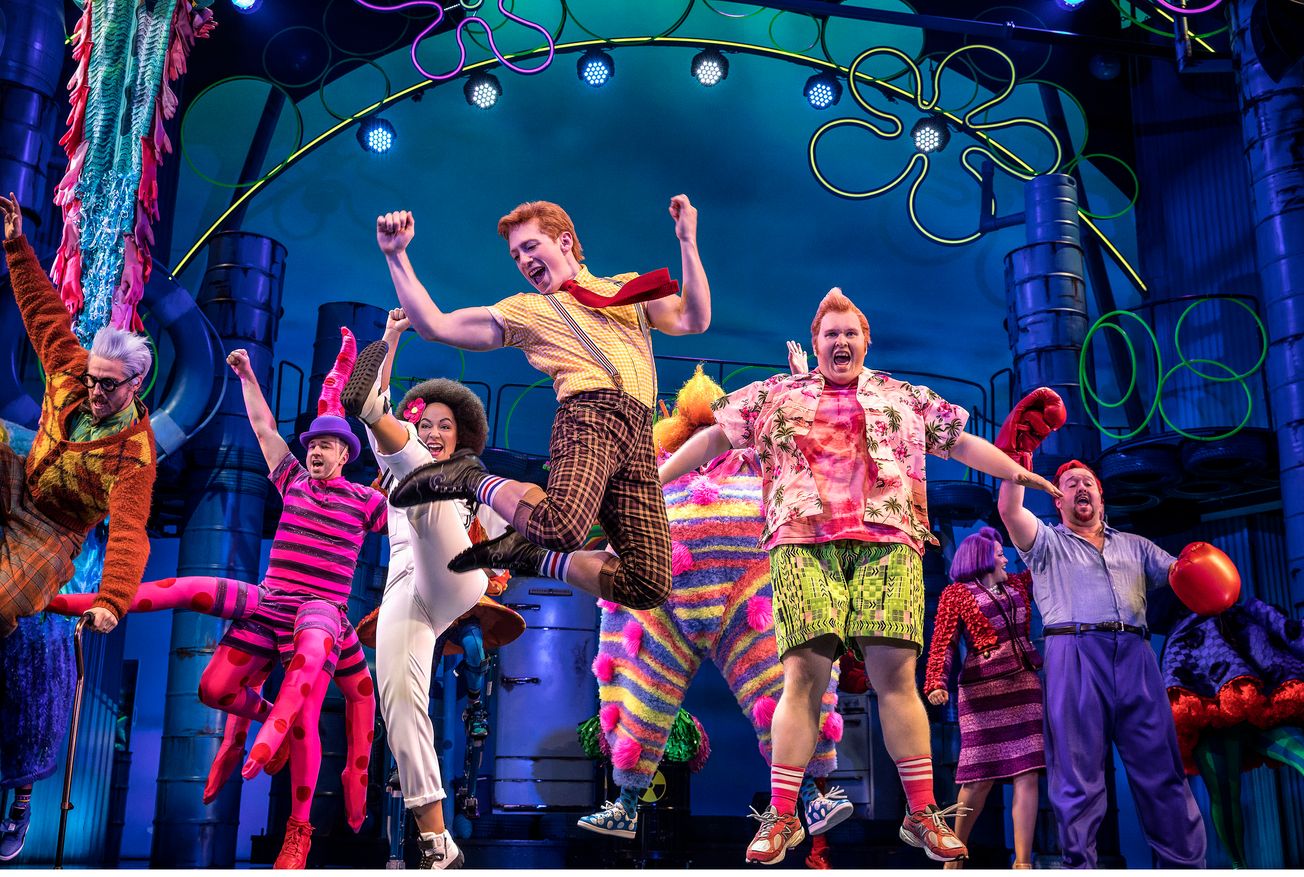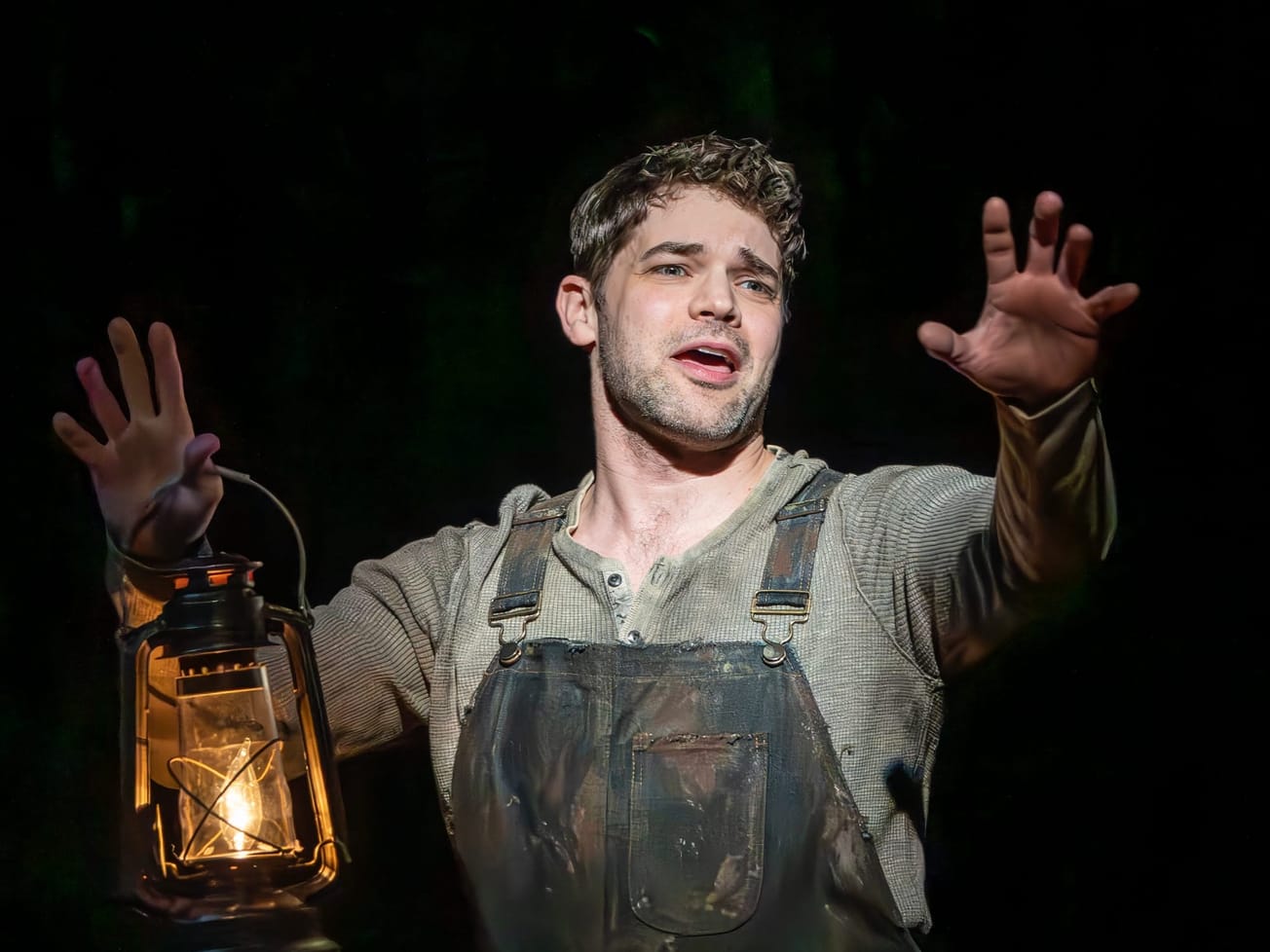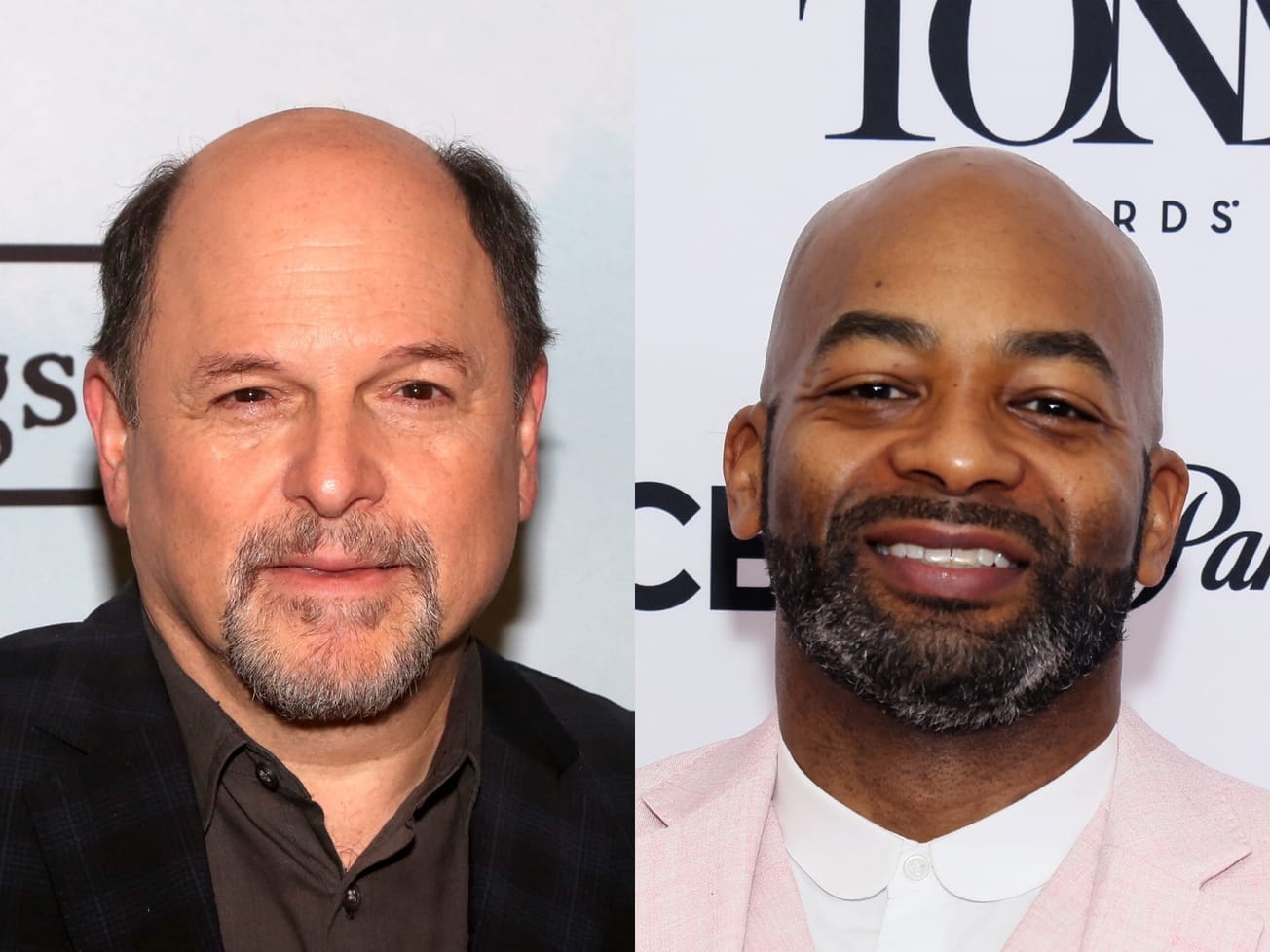In the “SpongeBob SquarePants” universe, a pineapple, a sponge and a squirrel coexist under the sea.
To create a theatrical version of this illogical world, director Tina Landau relied on a similarly disparate collection of musical talents, from rapper T.I. to members of Aerosmith to gospel artist Yolanda Adams. With pitches rapped over the phone and demos sent back over voicemail, Landau and her team constructed a rare Broadway score featuring original songs by more than a dozen artists.
“Don’t make it some idea of what you think a SpongeBob musical is supposed to sound like. Make it in your own voice,” Landau advised the artists.
Landau’s vision took shape as she studied the television show in preparation for her pitch to Nickelodeon. In her research, she found that the score of the television show matched the surrealism of its surroundings, as she heard sea shanties, country western tunes and even “Mahler-esque” moments peppered throughout.
Listening to the movie soundtrack, which features music from Wilco and The Flaming Lips, added to that idea, pushing Landau toward the idea of musical score with songs that were “hip and singular and contemporary.”
“The world of Bikini Bottom and SpongeBob is so much about variety and a surreal mashup of things,” Landau said.
Her idea ended up being realized with 15 different artists writing original songs for the musical, including John Legend, Cyndi Lauper and Panic! at the Disco. That feat is a rarity on Broadway, with perhaps the closest comparison being “Urban Cowboy,” which listed thirty composers and lyricists in its 2003 Tony Category for Best Score – though not all songs were originally written for the musical.
Doug Cohn, senior vice president of music for Nickelodeon, jumped into the project about eight years ago to help Landau select the artists. The selection was based on the genre Landau envisioned for the moment as well as artists Cohn had worked with or who he thought would be interested in writing for a musical.
Once they landed on an artist, Landau would pitch them with a short description of where the song fit in the show, the dialogue around the scene and a few pages of lyric prompts, such as ideas for the hook or song structure.
In many cases, Landau took a hand’s on approach, with Cohn calling her pitch to T.I. “one of the best phone calls” of his life.
“I remember I was sitting in my car outside my office and I’m like ‘Oh my goodness this woman is rapping to T.I.,” Cohn said.
“I just went for it with all of them,” Landau said.
Songs began arriving in various forms. Artists sung into their phones, wrote sheet music, sent in recordings of just piano and vocals or fully produced demos and even left messages on voicemail, Cohn said. With the help of arranger Tom Kitt, the team would then send feedback and ask the artist if they wanted to make changes themselves or have the team do it.
Kitt, who is also the music supervisor and orchestrator for the show, said he drew heavily on his experience working on “American Idiot,” as he tackled the challenge of making all songs sound like they were part of the same universe, while keeping the songwriter in mind.
“I want to make sure that I’m honoring the sounds and sensibilities of the artists that are writing these songs,” Kitt said.
He approached that issue by weaving bits of different songs throughout the musical, so that the song didn’t exist as a stand-alone entity. He then drew on the 18-piece orchestra to give the songs more theatricality, adding reeds and a string quartet, for example, to John Legend’s piano-based “(I Guess I) Miss You.”
The team’s efforts appear to have worked, as critics were won over by the score during the show’s Chicago run, with Chris Jones of the Chicago Tribune saying that the music, which he called the show’s “biggest gamble,” “works quite beautifully.” The Broadway run opens Monday at the Palace Theatre.
The score also features a song from David Bowie, who had voiced a guest character on the television show. Cohn said they had approached Bowie’s team several years ago and were given “carte blanche” to use a song from his catalog, with Landau selecting “No Control,” Bowie’s collaboration with Brian Eno.
“Best Day Ever” is the other song not original to the score, as it was taken from the SpongeBob movie.
Cohn has a few theories as to why some of these artists would jump into the musical theater genre for the first time.
On one hand, SpongeBob seems to be a unifying force, as he said many of the artists were already fans or have children who are fans of the show.
But contributing a song to the score also gives the artists the chance to test out writing for musical theater, which he notes could set them up to create their own musicals in the future.
“It’s like dipping your toe in the water without having to commit,” he said.


























































